
Industrial distributor DXP Enterprises (NASDAQ: DXPE) met Wall Street’s revenue expectations in Q1 CY2025, with sales up 15.5% year on year to $476.6 million. Its non-GAAP profit of $1.26 per share was 5% above analysts’ consensus estimates.
Is now the time to buy DXP? Find out by accessing our full research report, it’s free.
DXP (DXPE) Q1 CY2025 Highlights:
- Revenue: $476.6 million vs analyst estimates of $477 million (15.5% year-on-year growth, in line)
- Adjusted EPS: $1.26 vs analyst estimates of $1.20 (5% beat)
- Adjusted EBITDA: $52.52 million vs analyst estimates of $52 million (11% margin, 1% beat)
- Operating Margin: 8.5%, up from 7.1% in the same quarter last year
- Free Cash Flow was -$16.94 million, down from $24.1 million in the same quarter last year
- Market Capitalization: $1.39 billion
David R. Little, Chairman and Chief Executive Officer commented, "First quarter results reflect the resilience and durability of DXP’s business. We are pleased with our sequential sales growth and strength in our gross profit margins. This resulted in operating leverage that produced earnings per share of $1.25. DXP’s first quarter 2025 sales were $476.6 million, or a 15.5 percent increase over the first quarter of 2024. Organic sales for the quarter, increased 11.1 percent and acquisitions added $31.1 million in sales. Adjusted EBITDA grew $12.2 million, or 30.2 percent over the first quarter of 2024. During the first quarter of 2025, sales were $327.1 million for Service Centers, $63.3 million for Supply Chain Services, and $86.2 million for Innovative Pumping Solutions. Overall, we are very pleased with our performance and the progress DXP continues to make as a growth company. We are optimistic that we can show continued sales and profit improvement during the remainder of 2025. "
Company Overview
Founded during the emergence of Big Oil in Texas, DXP (NASDAQ: DXPE) provides pumps, valves, and other industrial components.
Sales Growth
Reviewing a company’s long-term sales performance reveals insights into its quality. Any business can put up a good quarter or two, but the best consistently grow over the long haul. Thankfully, DXP’s 8.3% annualized revenue growth over the last five years was decent. Its growth was slightly above the average industrials company and shows its offerings resonate with customers.
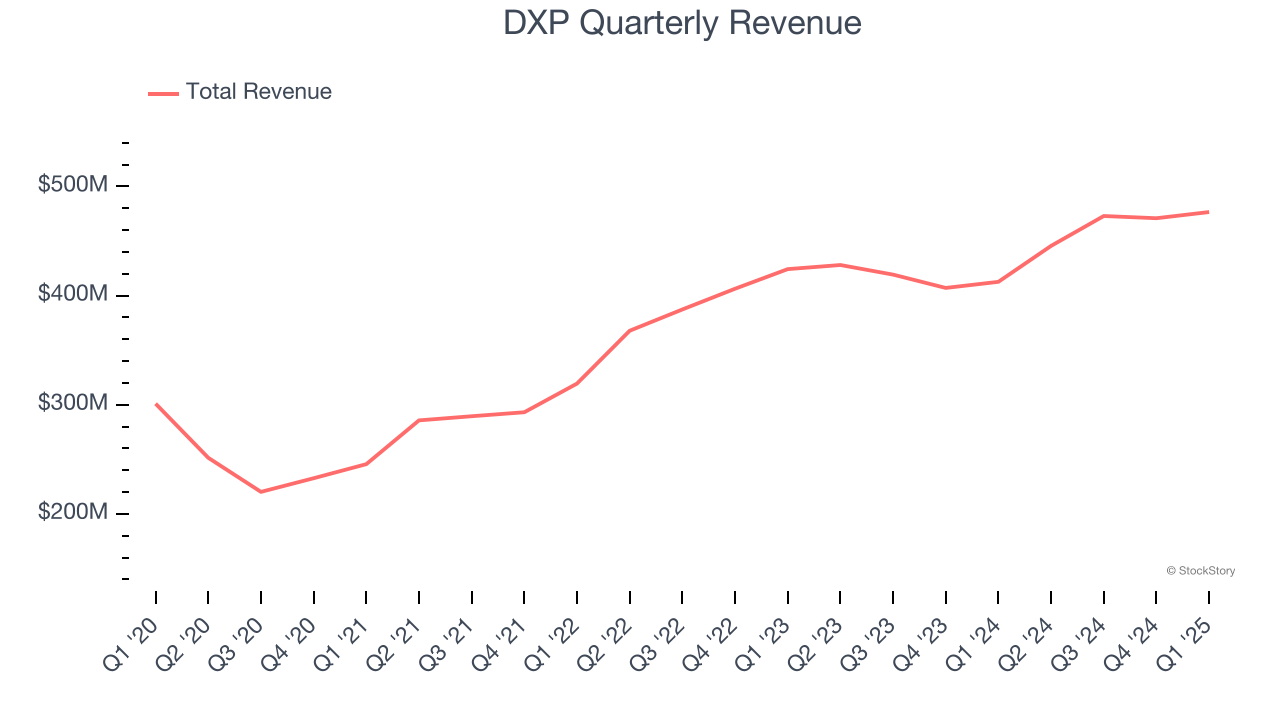
Long-term growth is the most important, but within industrials, a half-decade historical view may miss new industry trends or demand cycles. DXP’s annualized revenue growth of 8.5% over the last two years aligns with its five-year trend, suggesting its demand was stable. 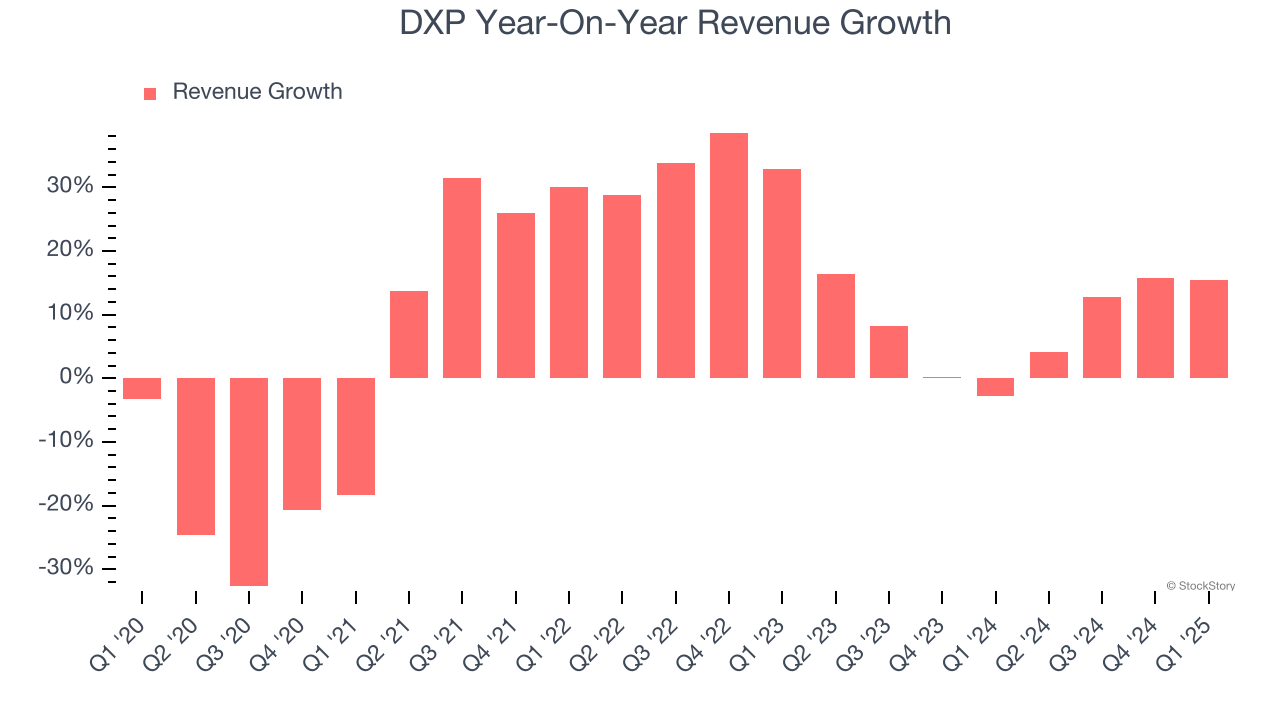
This quarter, DXP’s year-on-year revenue growth was 15.5%, and its $476.6 million of revenue was in line with Wall Street’s estimates.
Looking ahead, sell-side analysts expect revenue to grow 7.3% over the next 12 months, similar to its two-year rate. This projection doesn't excite us and implies its products and services will see some demand headwinds.
Unless you’ve been living under a rock, it should be obvious by now that generative AI is going to have a huge impact on how large corporations do business. While Nvidia and AMD are trading close to all-time highs, we prefer a lesser-known (but still profitable) stock benefiting from the rise of AI. Click here to access our free report one of our favorites growth stories.
Operating Margin
DXP was profitable over the last five years but held back by its large cost base. Its average operating margin of 6.7% was weak for an industrials business. This result isn’t too surprising given its low gross margin as a starting point.
On the plus side, DXP’s operating margin rose by 5.6 percentage points over the last five years, as its sales growth gave it immense operating leverage.
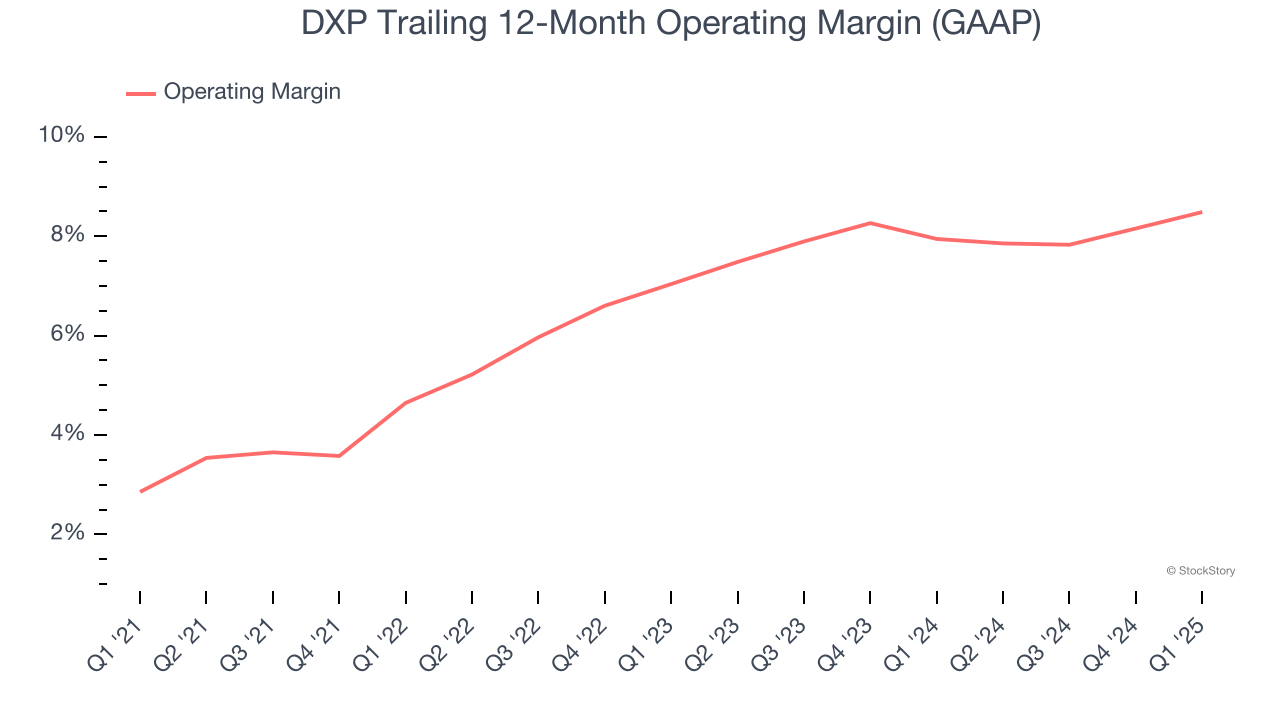
This quarter, DXP generated an operating profit margin of 8.5%, up 1.4 percentage points year on year. Since its gross margin expanded more than its operating margin, we can infer that leverage on its cost of sales was the primary driver behind the recently higher efficiency.
Earnings Per Share
We track the long-term change in earnings per share (EPS) for the same reason as long-term revenue growth. Compared to revenue, however, EPS highlights whether a company’s growth is profitable.
DXP’s EPS grew at an astounding 22.2% compounded annual growth rate over the last five years, higher than its 8.3% annualized revenue growth. This tells us the company became more profitable on a per-share basis as it expanded.
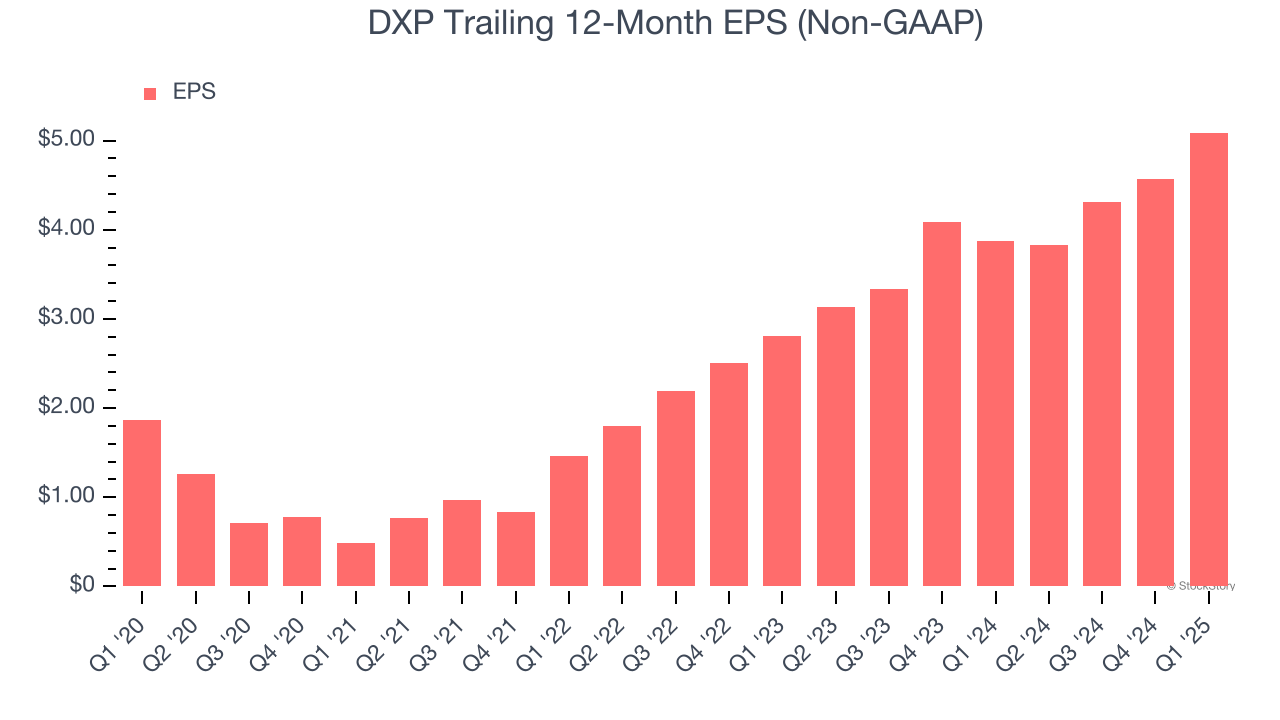
We can take a deeper look into DXP’s earnings to better understand the drivers of its performance. As we mentioned earlier, DXP’s operating margin expanded by 5.6 percentage points over the last five years. On top of that, its share count shrank by 10.9%. These are positive signs for shareholders because improving profitability and share buybacks turbocharge EPS growth relative to revenue growth. 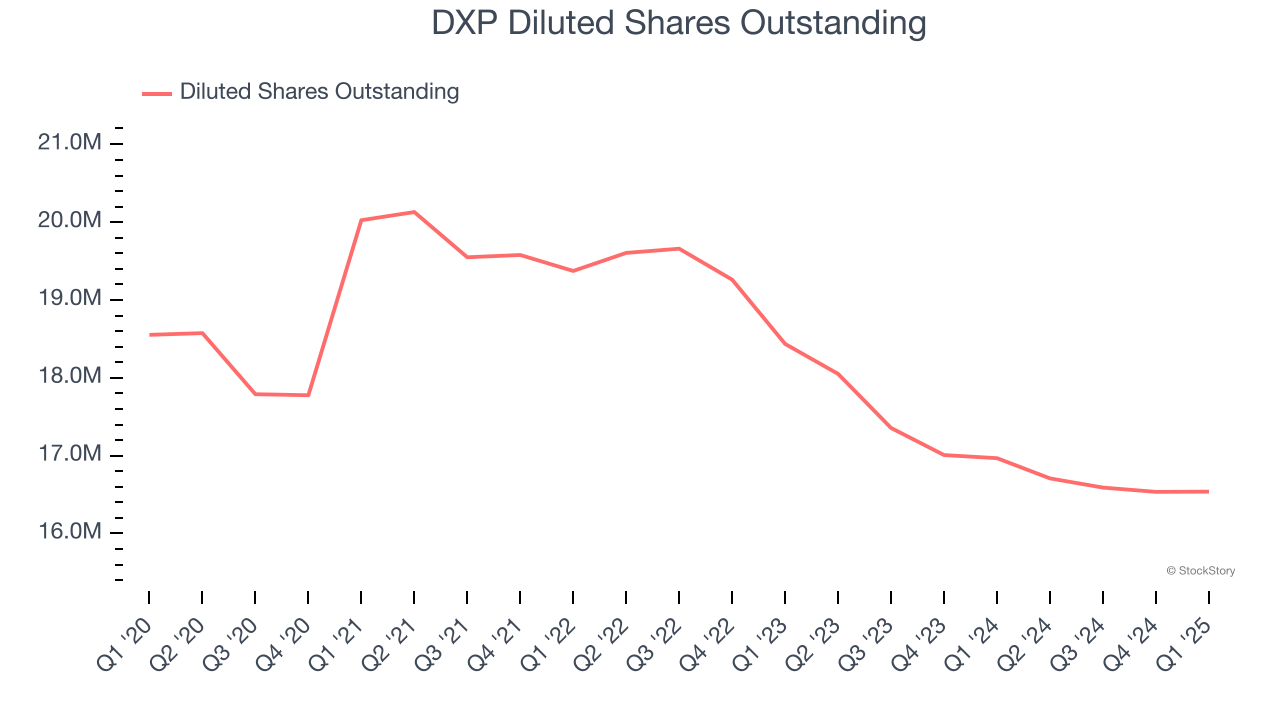
Like with revenue, we analyze EPS over a shorter period to see if we are missing a change in the business.
For DXP, its two-year annual EPS growth of 34.6% was higher than its five-year trend. We love it when earnings growth accelerates, especially when it accelerates off an already high base.
In Q1, DXP reported EPS at $1.26, up from $0.74 in the same quarter last year. This print beat analysts’ estimates by 5%. Over the next 12 months, Wall Street expects DXP’s full-year EPS of $5.09 to grow 8.3%.
Key Takeaways from DXP’s Q1 Results
It was encouraging to see DXP beat analysts’ EPS expectations this quarter. We were also happy its EBITDA narrowly outperformed Wall Street’s estimates. Revenue was just in line. Zooming out, we think this was a decent quarter featuring some areas of strength. The market seemed to be hoping for more, and the stock traded down 4.3% to $85 immediately following the results.
So do we think DXP is an attractive buy at the current price? When making that decision, it’s important to consider its valuation, business qualities, as well as what has happened in the latest quarter. We cover that in our actionable full research report which you can read here, it’s free.

